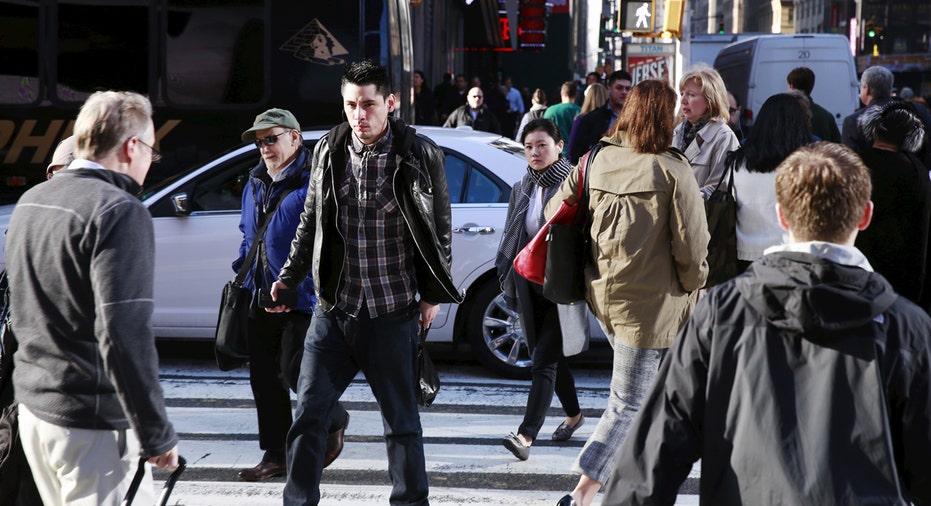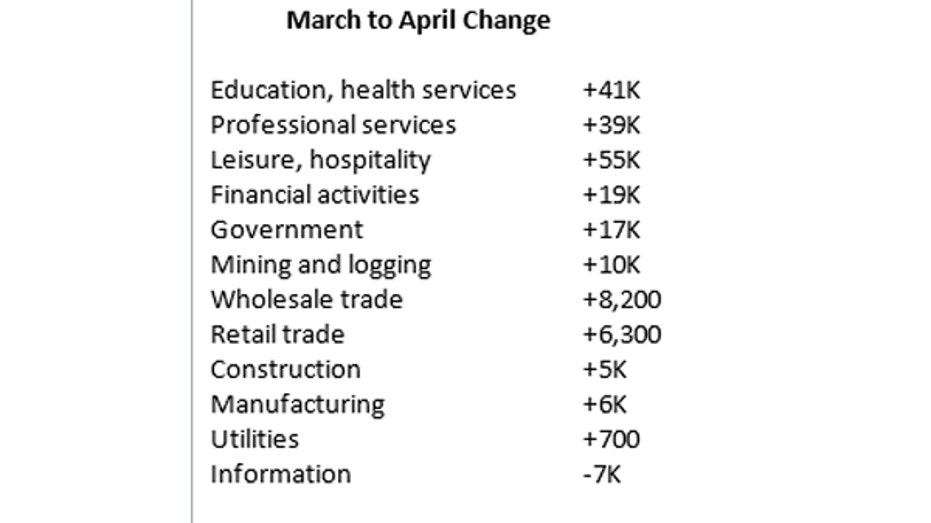April Jobs Report Boosts Optimism for Spring Rebound, June Rate Rise

The labor market saw a solid bounce back in April after a disappointing March as the number of jobs created blew past expectations while the unemployment rate hit its lowest level in 10 years. The data suggest the economy is set for a spring rebound after a weak first quarter, and pushed Wall Street’s odds for a June rate rise to more than 80%.
The U.S. economy added 211,000 net new jobs last month, according to figures released Friday by the Labor Department, far above forecasts for 185,000 jobs, as the unemployment rate dropped from 4.5% to 4.4%, its lowest level since May 2007. The jobless rate had been expected to tick higher by 0.1%.
While the labor force participation rate edged down to 62.9% from 63% during the month, collectively the data point to a labor market that is nearing full employment – a benchmark the Federal Reserve has been striving to meet in the aftermath of the financial crisis as it looks to raise interest rates and return monetary policy to a more normal stance. A broad measure of unemployment – which factors in Americans who want to work but can’t find openings, and those working part-time for economic reasons – dropped to 8.6% in April from 8.9% in March.
“The trends suggest a steady and improving economic outlook,” said Sameer Samana, Wells Fargo Investment Institute’s global quantitative strategist. “History would suggest that sweet spot of steady growth, but not at a pace causing inflation or aggressive rate hikes, is good for investors.”
Indeed, inflation has been slow to reach the central bank’s 2% target. Both Wall Street and the Fed have been keeping close tabs on the core personal expenditures index, which strips out volatile food and energy consumption, and wage growth, both of which have been sluggish to pick up during the economic recovery. In April, average hourly earnings rose seven cents, or 0.3% as expected, but that put pressure on the year-over-year gains, which registered a 2.5% advance, a slight decrease from the figure in March. As Samana pointed out, the April figure is just slightly below the long-run average of 2.7%, and likely helps keep the Fed cautious with respect to raising interest rates.

The central bank this week held its benchmark rate steady and said it would base any future rate-increase decision on incoming economic data. After raising rates by 0.25% in March, the Fed said it expected to raise rates twice more before the end of the year.
Before it does that, though, members of the policy-setting Federal Open Market Committee would like the labor market to continue tightening alongside rising inflation levels, but data from the first quarter have cast doubt about the economy’s growth trajectory: A preliminary read on economic growth during the first three months of the year showed a sharp slowdown from the fourth quarter as business activity slowed somewhat. What’s more, while sentiment surveys suggest Americans are upbeat about their economic and business prospects, hard data from the government show consumers are reluctant to continue spending cash on hand.
“We need wages to climb higher so that the all-important consumer can continue underpinning economic growth,” said Quincy Krosby, market strategist at Prudential Financial, who said Friday’s report suggests the Fed will “most certainly” raise rates in June. “We’re getting closer and closer to full employment and wages are sure to follow.”
April’s employment gains came primarily from leisure and hospitality, health care and social assistance, and the financial sector. The retail industry, which has seen two-straight months of declines and has shed 89,000 positions as of March since its October high, regained its footing last month as it added just more than 6,300 jobs. Pressuring the sector has been a momentous shift to online shopping, which has forced big-name retailers like Macy’s (NYSE:M), JCPenney (NYSE:JCP), and a host of others to reduce their workforce and slim their store portfolios.



















